Helpful tips for how to design a minimalist bedroom for kids.
A few weeks ago, I walked into my daughter’s bedroom. There were piles of toys on the floor, discarded clothes on top of the dresser, clutter in the corners, and who knows what lurking under the bed. Her brother’s bedroom didn’t look any better.
We clean every week or two, sorting the mess, and putting things back in their place. And, of course, as kids, my son and daughter aren’t going to spend time to de-clutter and organize their rooms in between cleaning sessions.
This wasn’t a one-time thing. After we’d clean on the weekend, the bedrooms would be back to their messy state a few days later.
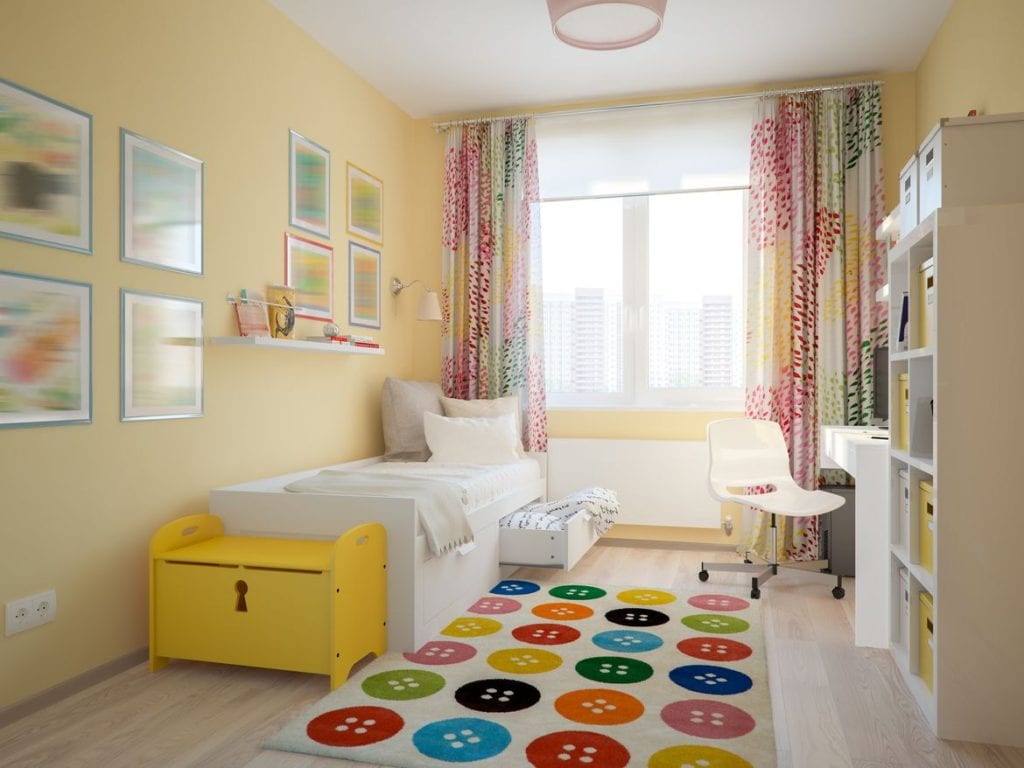
The way I’d organized our kids bedrooms wasn’t working.
However, there’s a way out of all that clutter, by embracing a minimalist design for your kid’s bedroom.
What is minimalism?
Minimalism is a style or design where the fewest and simplest elements are used to create the maximum effect.
Minimalism isn’t about depriving your child of things that they need or love. A minimalist bedroom can still have their favorite toys and mementos, a wonderful, comfy mattress and a lovely, open place space.
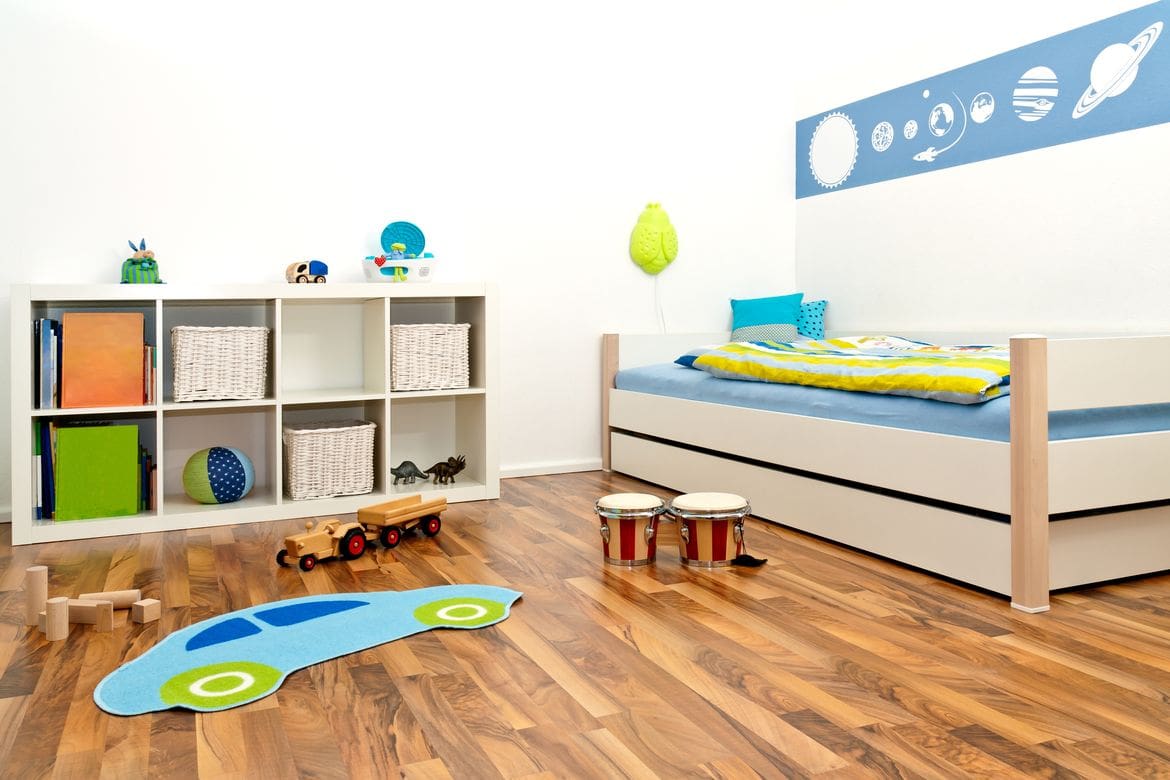
What are the benefits of minimalism?
Minimalism has many advantages:
- Minimalism is a simple, time-tested way to de-clutter areas, with built in ways to keep them neat and clean. Well, as clean as a kid’s bedroom can stay.
- Embracing minimalism can give your children an understanding of the value of their items, and an understanding that more things isn’t always better.
- Minimalism can reduce cleaning time, simply by having less clutter to clean up.
- Using minimalism can improve mental health, by creating a calm, uncluttered environment.
How to design a minimalist bedroom for kids
A minimalist design doesn’t mean sparse. It isn’t about creating a cold, empty space with no personality or warmth. Instead, it’s about making a space that’s clutter free, using the fewest design and practical elements.
These are our minimalist design ideas to make your children’s bedrooms look better, reduce cleaning time, and create a calm and restful sanctuary for your child.
Get your child’s input
As with anything, you’ll find your child is much more enthused about your plans if you include them in the planning.
Most importantly, make sure you ask them what elements they want to keep. Do they have certain mementos and keepsakes they just can’t live without? Be sure to include these in the design.
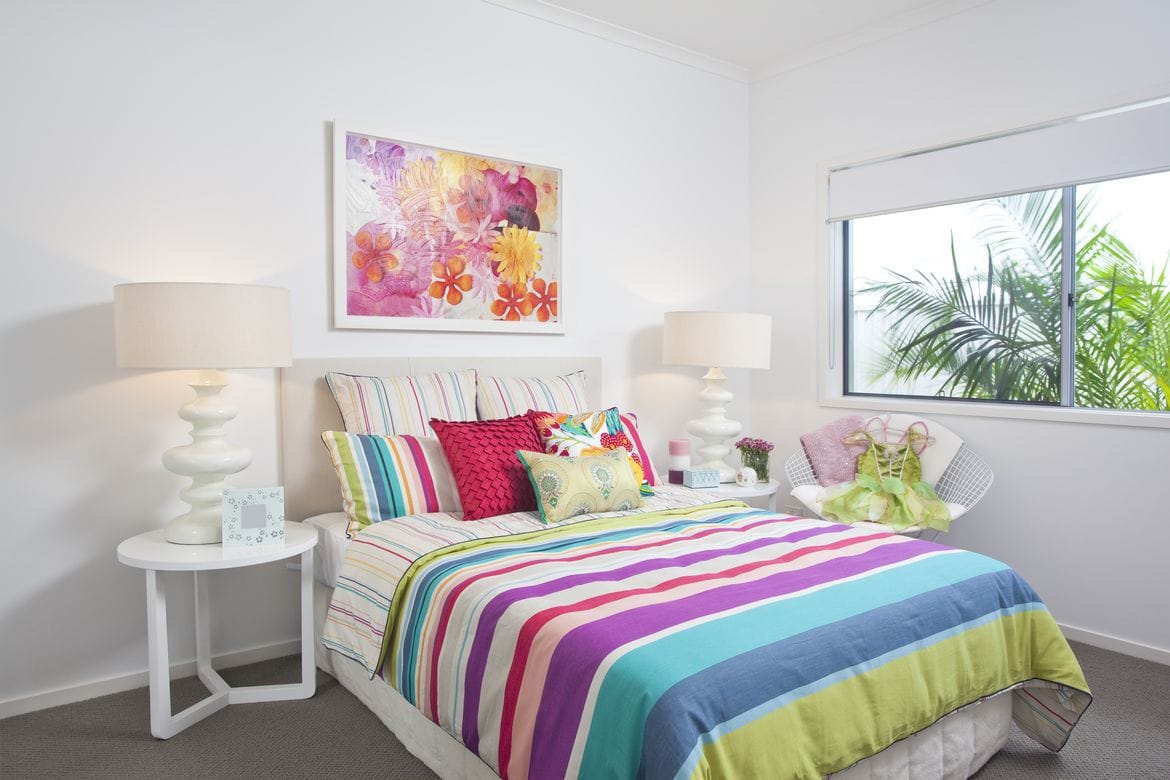
What does your child enjoy? If your child loves guitar, make sure to include a space for guitar storage, and a play to play. If your child loves sports, include storage for sports bags, and equipment.
Important items like a musical instrument, comforting stuffed animals, and so on, should be included in the design.
Get rid of the junk and clutter
The first step in making a minimalist bedroom is to declutter.
Getting rid of unnecessary items clears space for a new design. Plus, with fewer items, there’s less to clutter up a room, and less to clean.
Do whatever works for you, whether it’s using Marie Kondo’s style of decluttering, or a simple trio of baskets for keep, garbage, and donate items.
Don’t forget to clean out your child’s wardrobe!
Create focal points
Creating focal point is a way to draw the eye to interesting items, and away from less attractive things.
Sample focal points include interesting artwork, a colorful chair, or even a bed with a bright bedspread. Use your imagination.
Color choice
A minimalist color scheme doesn’t need to be muted pastels, although you do see soothing and simple muted colors in a lot of minimalist design.
What is your child’s style? Do they love bold, bright colors, or do they love neutrals or pastels? Incorporate their color favorites into your minimalist color choice.
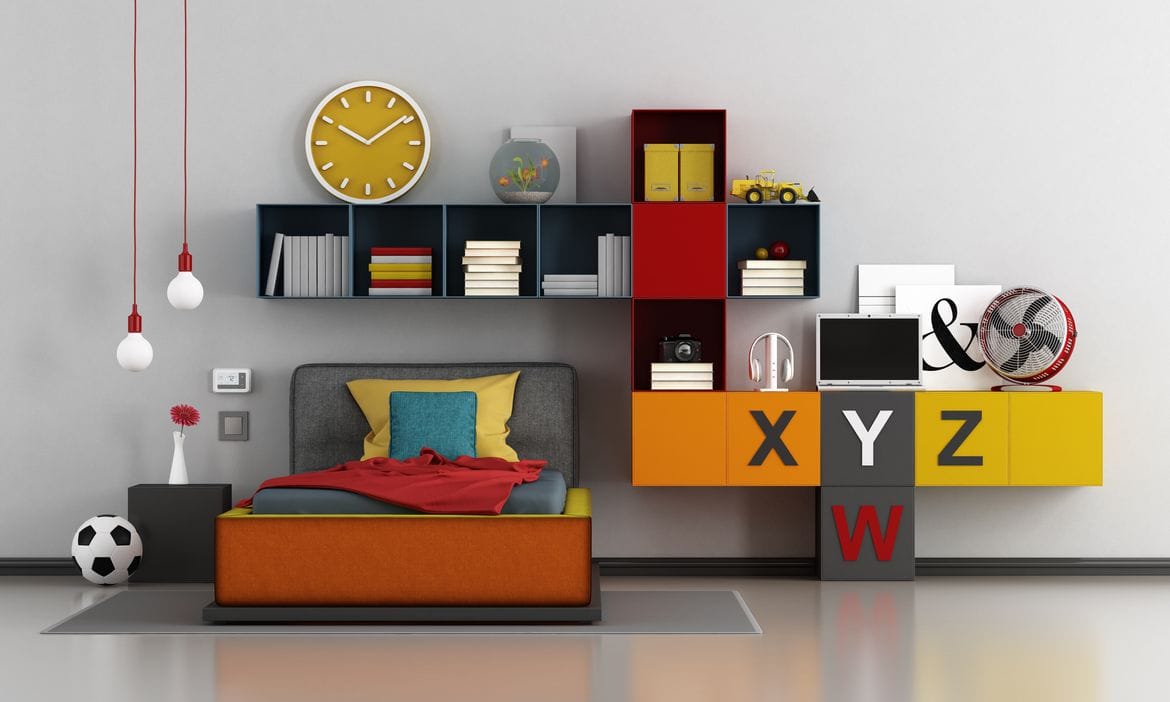
A simple palette
Whether you choose muted neutrals, or bright primary colors, choosing a simple palette of two or three main colors can keep your design minimalist.
A simple palette creates a less cluttered, and more restful feeling in the room, and is one of the top tips for how to design a minimalist bedroom for kids.
Bring in the natural light
Natural light is a wonderful way to make any design seem simpler and airier. If there isn’t much natural light from a window or door, then carefully choose simple lamps and lighting to create a similar effect.
Careful furniture selection
Too much furniture, or unnecessarily heavy and clunky furniture, is out of place in a minimalist design.
Instead, choose furniture with a simple design, which is the right size for the room. A simple bedframe with storage, or a frameless bed is a good choice.
That brings us to my next point: use items that have multiple purposes.
Items that serve more than one purpose
Multi-purpose items are a minimalist’s delight.
A bed with under bed storage is a great example, as is a footrest with storage inside.
Organization
One of the key hallmarks of a minimalist design is that there is a place for everything in the room.
Put another way, everything needs a home. Here are a few ways you can accomplish that.
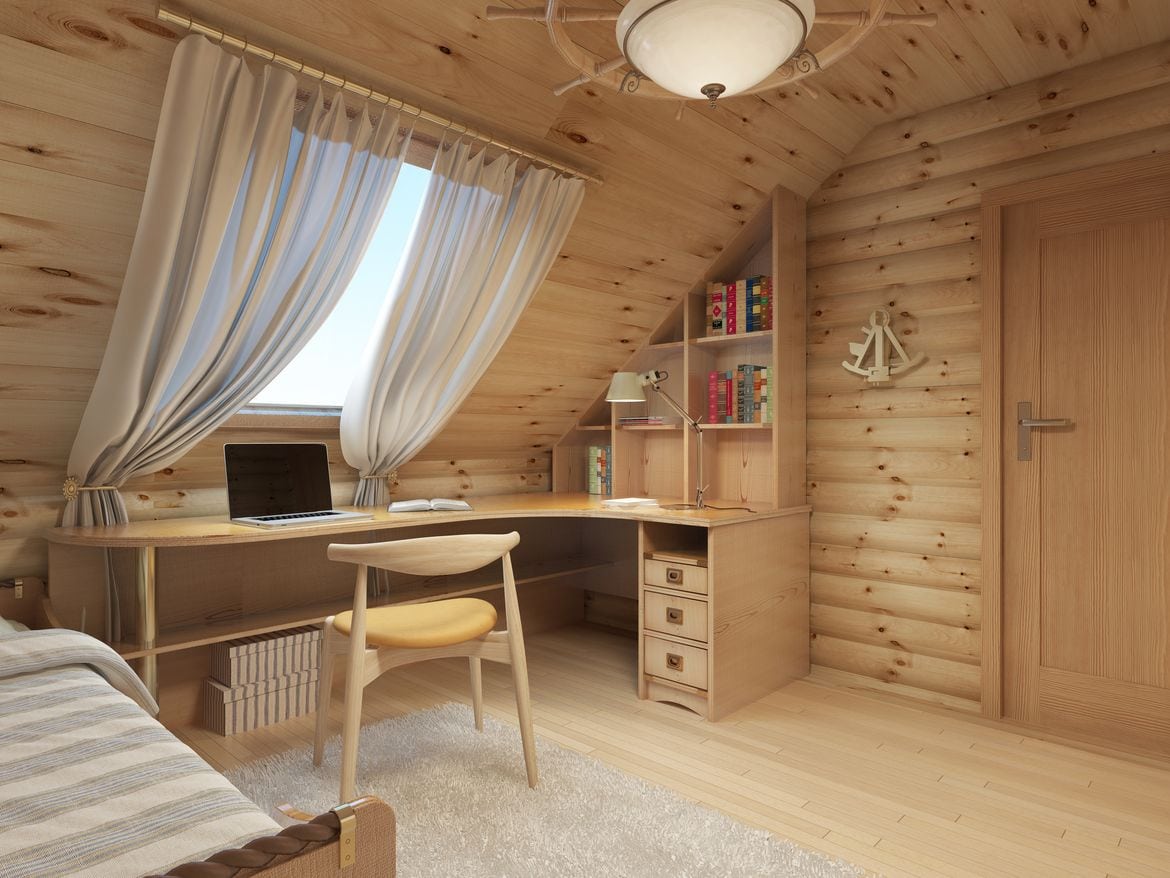
Create a drop zone
Even the neatest, cleanest design is undone the moment your child walks into their room, dumping their bookbag, jacket, and whatever else in the middle of the room.
Instead, create a drop zone where you child can easily drop their everyday items when they walk in the room. It may be a roomy woven basket at the entrance, a simple bench, or just a nice bin on their dresser to hold their phone and earphones.
Toy storage
Having kids means having toys.
Depending on their age, be sure to include areas for storage of toys, like special baskets, bins, shelving, under bed storage, and the like.
Under bed storage
Under bed storage is a wonderful way to keep toys out of sight. There’s a lot of room under a bed for everything from toys, to extra bedding, to keepsakes.
Bins and containers
Keeping attractive bins and containers next to your child’s play space is a wonderful way to make toy cleanup easy.
Shelving
Shelving is a simple, effective way to store books, mementos, and more.
Rugs
While a rug seems like an unnecessary element in a minimalist design, that’s not necessarily the case.
A rug dampens sound, creates a soft space on the floor to play, and makes a room seem cozier and more welcoming. A soft, washable rug is ideal for a child’s room.
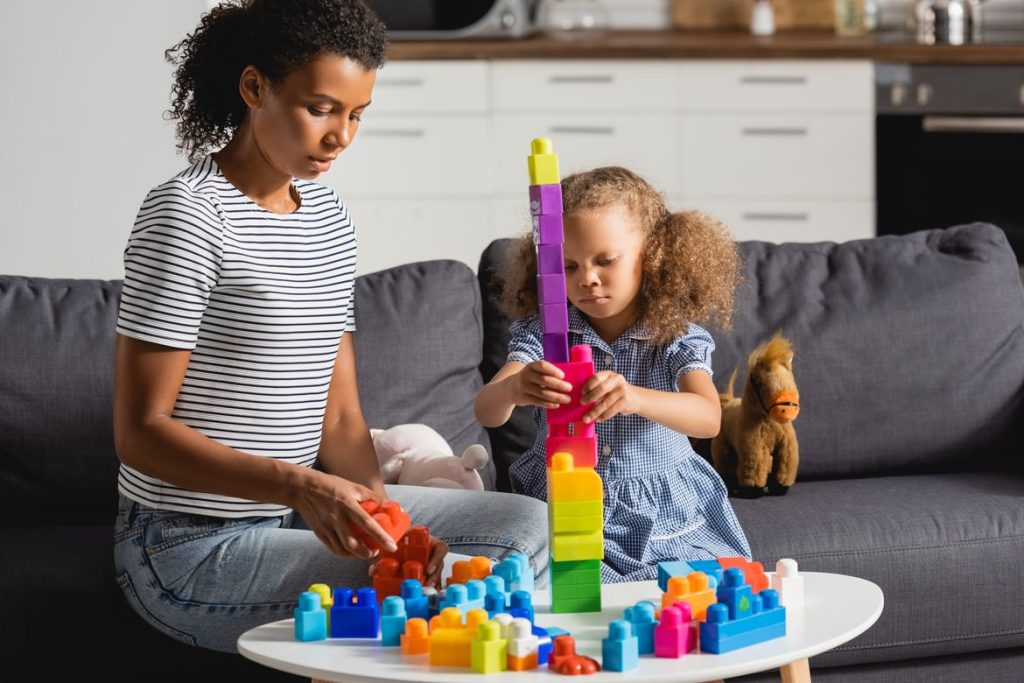
Decoration
Minimalist designs don’t need to be devoid of decoration!
Some of the most attractive minimalist designs include wall art, carefully chosen mementos, art, photos and books.
Looking for some more design friendly articles? Check these out:
- 10 Easy Kitchen Wall Decor Ideas for Your Home
- 20 Essentials For A New Home You Need To Buy Now
- What to Look for in a Kitchen When Buying or Renting a Home
- Easy Self Care Ideas for Moms
Do you have any minimalist design tips for a child’s bedroom? Let us know!
